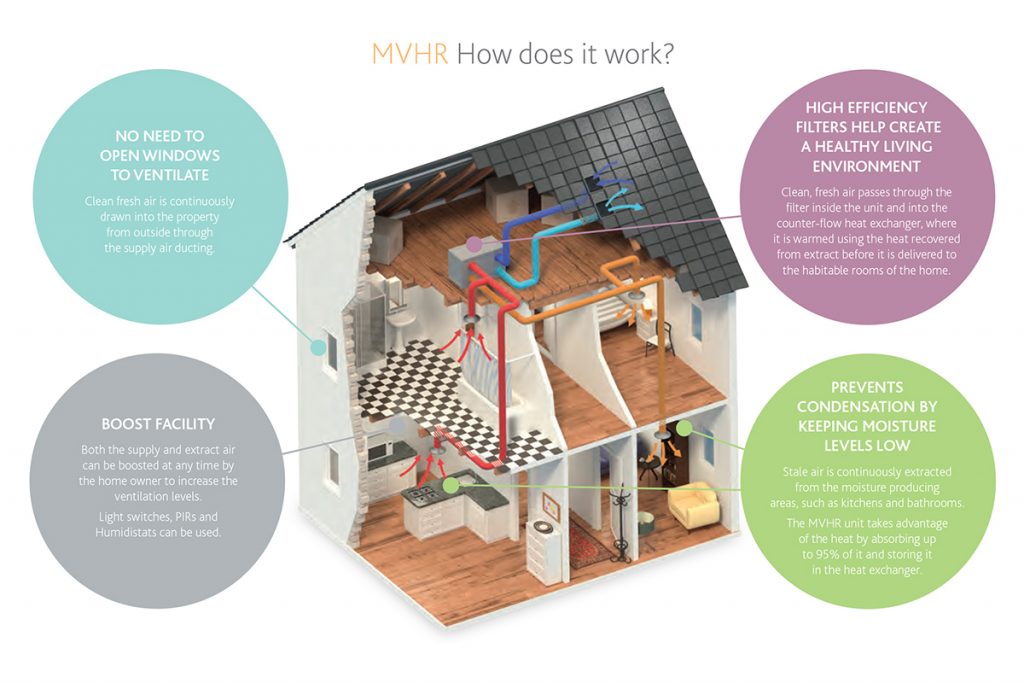Andy Mudie, Marketing & Business Development Director at Nuaire outlines why the quality of indoor air in buildings is an issue that cannot be ignored
A recent survey by trade association BEAMA has revealed that 35% of homes across the UK are at an elevated or severe risk of polluted indoor air. Yet, because we can’t see or easily test the quality of our indoor air, it’s easy to ignore the problem.
This year, research from the Royal College of Physicians has put the issue of air pollution firmly in the spotlight, amplifying the concerns raised by healthcare professionals and shared by the ventilation industry. Poor indoor air quality is killing us.
Professor Stephen Holgate, who led the report from the Royal College of Physicians, highlighted the ultimately deaths that are directly linked to poor indoor air quality: “When our patients are exposed to such a clear and avoidable cause of death, illness and disability, it is our duty to speak out,” he said.
“We know that air pollution has a substantial impact on many chronic long-term conditions increasing strokes and heart attacks in susceptible individuals. And now there is compelling evidence that air pollution is associated with new onset asthma in children and adults.”
The study has revealed that indoor air can be up to 50 times more polluted than outdoor air, containing up to 900 potentially dangerous chemicals, many of which increase the chances of developing illnesses such as asthma, lung cancer and heart disease.

This report, coupled with research from NICE and the World Health Organisation on the sources and effects of indoor air pollutants, gives weight to the arguments, put forward by ventilation manufacturers like Nuaire that IAQ must become a greater focus of the government and within Building Regulations.
The drive towards building more energy-efficient homes and improving the fabric of existing homes to save energy has encouraged builders, housing providers and developers to increase the air-tightness of their properties. Without adequate means of ventilation, there are serious implications for indoor air quality.
On average, 12-13 air changes per day are required within a building, to keep moisture levels low. Without adequate ventilation, humid conditions encourage mould spores to germinate and dust mites to breed, aggravating asthma and allergic symptoms. Even the most basic activities like cooking, washing and breathing cause humidity. And it’s not just damp and mould that causes problems – wood burning stoves, cleaning products and air fresheners all create harmful pollutants in our homes.
Most Effective Methods of Improving IAQ
So what is the answer to the endemic problem of poor IAQ? Research shows that the best way to tackle indoor air pollution is to make sure that you have effective ventilation. This is because effective ventilation removes indoor air pollutants from the home, stopping them from accumulating and keeping indoor air quality at a healthy level. By running continuously, an MVHR system will extract stale air which has been contaminated by indoor pollutants while filtering out pollen, pollutants and dust particles from the incoming air, thus ensuring good indoor air quality.
Mechanical Ventilation with Heat Recovery, or MVHR, is still the most effective ventilation strategy for new-build homes designed with high thermal values and high air-tightness. Nuaire’s range of low-energy systems includes models that are designed to fit around the size and use of the new build property: from low-profile systems designed to fit into apartments with shallow ceiling voids, up to our largest units for properties with up to six wet rooms. This variety helps simplify the specification of the correct MVHR size and duty for the property, which in the end helps ensure better indoor air quality and energy-efficiency.
At Nuaire, we are considering the issue of indoor air quality in urban developments with a new product range called Q-Aire. The new Q-Aire Carbon Filter is specifically designed for homes in urban areas, and it supports the MVHR system by ensuring the air is properly filtered before it enters the property. This measure protects the homeowner from damaging air pollutants such as carbon dioxide and nitrogen dioxide. The Carbon Filter is suitable for specification and allows contractors to meet planning obligations when building homes and apartments in areas with high air pollution.

Another exciting development is the Q-Aire 1Z, designed to solve a range of acoustic and over-heating problems commonplace in urban apartment design. Ventilating city apartments with MVHR must take into consideration issues such as external noise and air pollution, which can rule out the use of openable windows. This, combined with a trend to include large expanses of glazing, often leads to overheating issues. Designers often rely on the MVHR system to provide cooling, running the systems at higher speeds than intended. With the lightweight wall construction and lack of available space for adequate MVHR installation, noise issues have become a growing problem. The Q-Aire 1Z (Onsie) is an all-in-one, FULLY acoustically-treated unit that solves these problems. It solves vibration, in-duct and breakout noise all at once. It’s the first of its kind and the only system of its kind on the market. The attenuators and flexible duct connections that would be visible are fully encased for a neat and tidy install, all while making a significant reduction in case-radiated noise and breakout noise between system and duct.
How Can We Drive Improvements to IAQ?
There is a need for greater awareness and policy change. The ventilation industry is leading the charge by educating and encouraging conscious housebuilders, but we need backing from the government. Sustainable buildings must consider mechanical ventilation so that we can continue driving down energy usage in the home but without damaging our health. And when the government looks to make existing homes more energy-efficient it must stipulate adequate means of whole-home ventilation such as PIV; perhaps even offer additional ventilation or surveys if air-tightness is higher.
Nuaire
info@nuaire.co.uk
Please note: this is a commercial profile
















